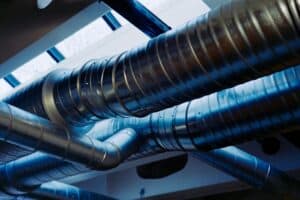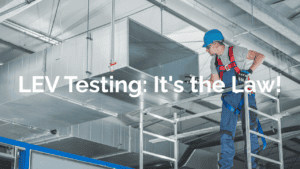As a Technical Director at Plasma Clean Air, I’ve spent years working with engineers and consultants to improve indoor air quality (IAQ) across a wide range of environments. But if there’s one sector where airborne contamination poses a quietly critical risk, it’s the data centre.
With the industry’s relentless push for uptime, efficiency, and longevity, the smallest oversight in environmental control can lead to major consequences—from corrosion damage on sensitive electronics to cooling inefficiencies and even downtime. That’s why we’re launching a suite of specialist solutions designed specifically for the unique demands of data centre environments.
Understanding the Standards: IEC 60721-3-3 and ANSI/ISA 71.04
When it comes to defining acceptable air quality in mission-critical environments, there are two key standards:
- IEC 60721-3-3 classifies environmental conditions, including corrosion control, and recommends maintaining corrosivity below severity level 3C1.
- ANSI/ISA 71.04-2013 provides widely adopted guidelines for airborne contaminants in control systems, with G1 representing the cleanest and safest classification.
Meeting these levels isn’t just a box-ticking exercise. Staying within G1 or 3C1 means extending the lifespan of servers, reducing maintenance interventions, and preventing unexpected failures due to corrosion or particulate buildup.
Measuring What Matters: Corrosion Monitoring and Environmental Sensors
To ensure compliance with these standards, our new Corrosion Monitoring Stations offer real-time and passive environmental data collection. These include:
- Outdoor and indoor corrosion test stations with standard ISA copper and silver coupons, exposed over 30 days to assess corrosivity.
- Gas detector-equipped stations that monitor for chemical contaminants and trigger alarms when thresholds are exceeded.
- Integrated weather stations, tracking key external variables like wind direction, rainfall, temperature, and humidity. Optional online monitoring allows remote access to live data.
Together, these tools provide a comprehensive picture of environmental risks both inside and outside the data hall.
Meet Surveyor Plus M: Your New IAQ Workhorse
At the heart of our new IAQ monitoring range is the Surveyor Plus M—a compact but powerful environmental monitor designed for critical environments.
It features:
- High-sensitivity silver and copper corrosion rate sensors that align with ISA environmental classifications.
- Monitoring of temperature, relative humidity, and differential pressure.
- Digital and analogue outputs, with optional data logging and Wi-Fi connectivity for seamless integration with existing BMS systems.
It’s a plug-and-play solution that gives engineers the data they need to act quickly and decisively.
The Next Step: Gas Phase Filtration Tailored to Data Centres
Monitoring is only one half of the equation. Effective gas-phase filtration is critical for mitigating airborne chemical threats like sulphur dioxide, nitrogen oxides, ozone, and VOCs.
Our chemical filtration range is engineered for maximum efficiency and flexibility, featuring:
- Pelletised loose media with high adsorption capacity and low pressure drop.
- Simple media replacement, compatible with both modern and legacy filtration systems.
- A range of chemical formulations:
- PM-660 (Activated Carbon) for VOCs and hydrocarbons.
- PM-360 (KOH) for acidic gases like SO₂ and NO₂.
- PM-760 (Phosphoric Acid) for ammonia and other base gases.
- PM-108 (KMnO₄) for formaldehyde, H₂S, and more.
Media life testing is available to support proactive replacement planning.
Flexible Housing Options for Every Setup
To accommodate diverse air handling configurations, we offer multiple gas-phase filtration unit types:
- Side Access Housings (SAH) – Tool-free media changes and compact footprint.
- Deep Bed Scrubbers (DBS) – Designed for large volumes and long service life.
- Indoor Recirculation Units (IRU/IPU) – Increase pressure and circulation in enclosed spaces.
- Custom Filter Units (CFU) – Tailored solutions using MM-series modules or MayAir carbon filters.
All units are designed with ease of installation and minimal maintenance in mind—most can be fitted by a single person without tools.
Why This Matters
Data centres don’t operate in a vacuum. They’re often built near urban or industrial zones, where outdoor pollutants can easily be drawn in through air handling units. And with many facilities now implementing economiser cycles to improve energy efficiency, the risk of contaminant ingress is higher than ever.
If you’re designing or maintaining a data centre, IAQ is no longer a secondary concern—it’s a critical component of resilience planning.
Let’s Talk
This product range is the result of close collaboration with engineers, data centre operators, and IAQ specialists. But we’re just getting started.
If you’re currently specifying filtration or monitoring systems for a data centre—or if you’re dealing with corrosion or unexplained electronics failures—we’d love to hear from you. We’re happy to offer technical guidance, product demos, or even just a conversation about what’s working (and what’s not) in your current setup.
Drop me a message to learn more.
Author: David Glover PhD
Technical Director, Plasma Clean Air Ltd








